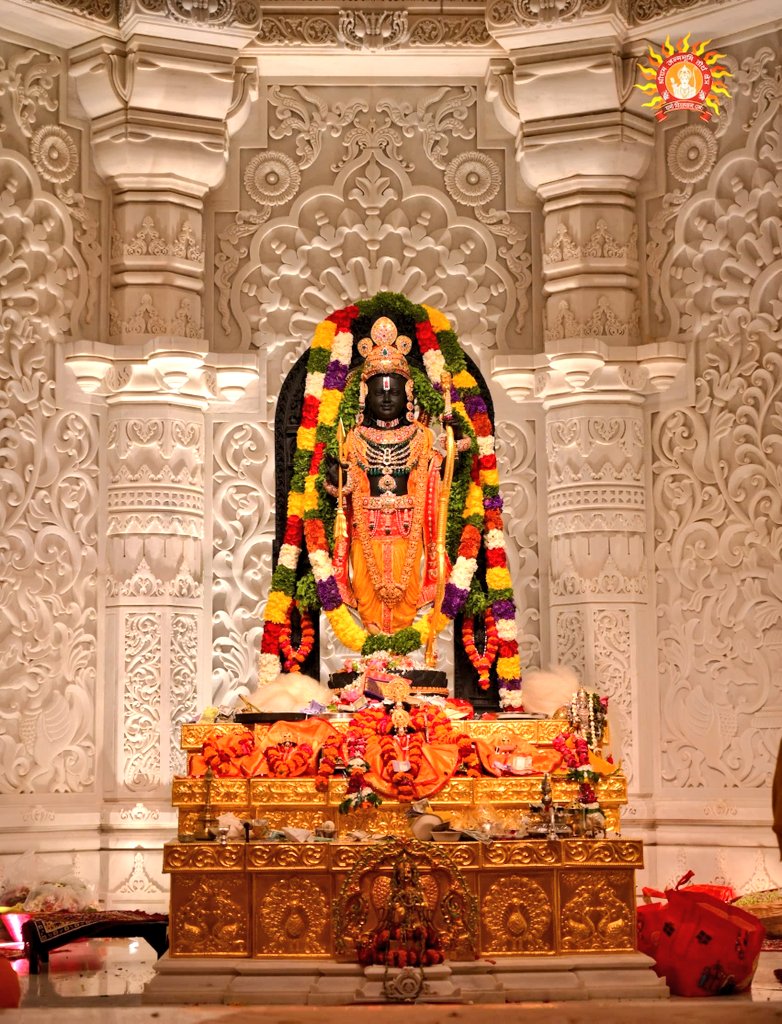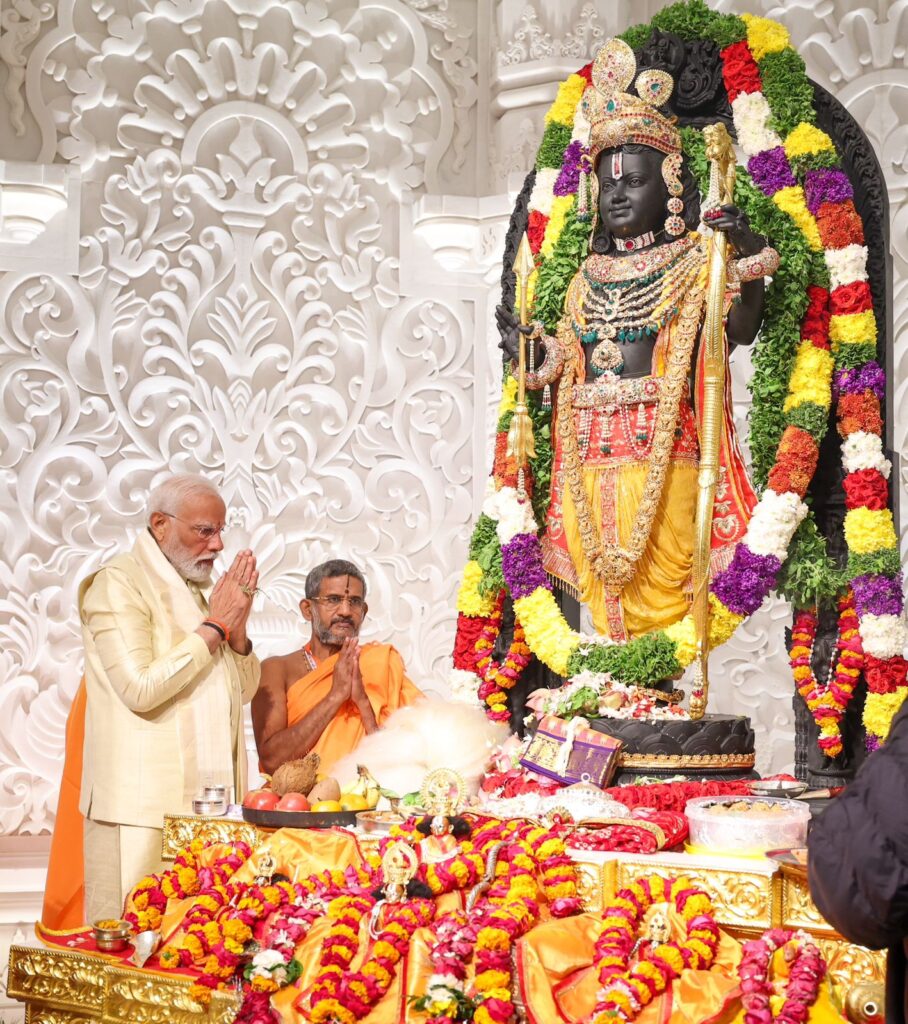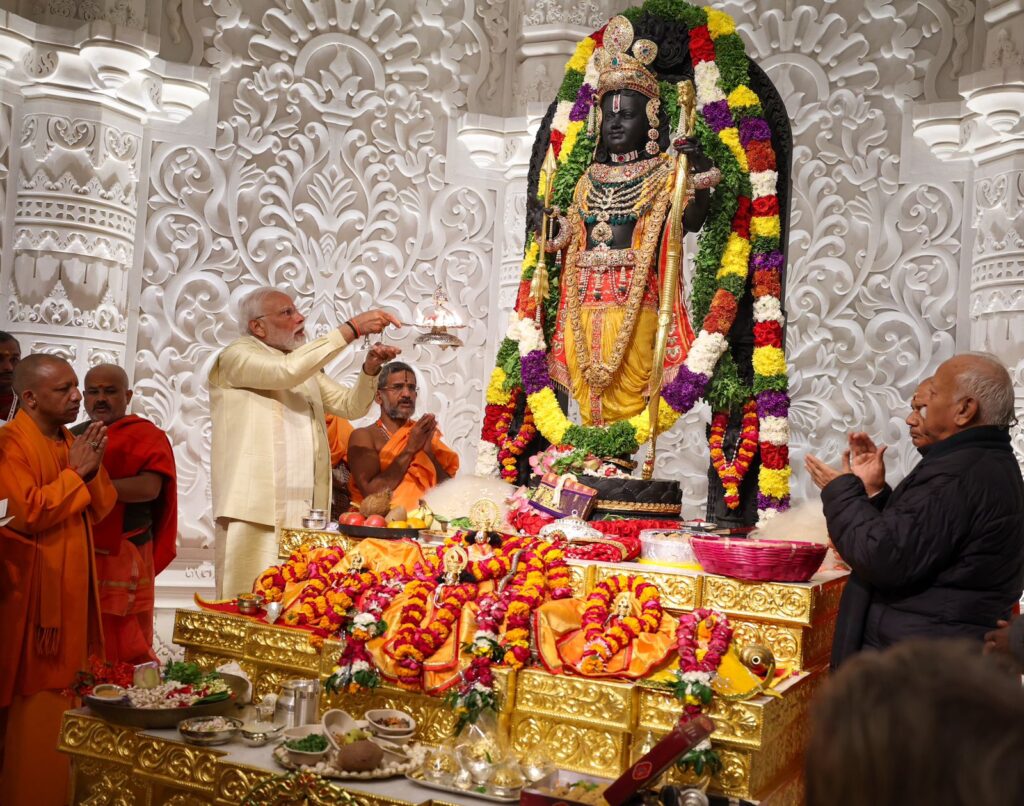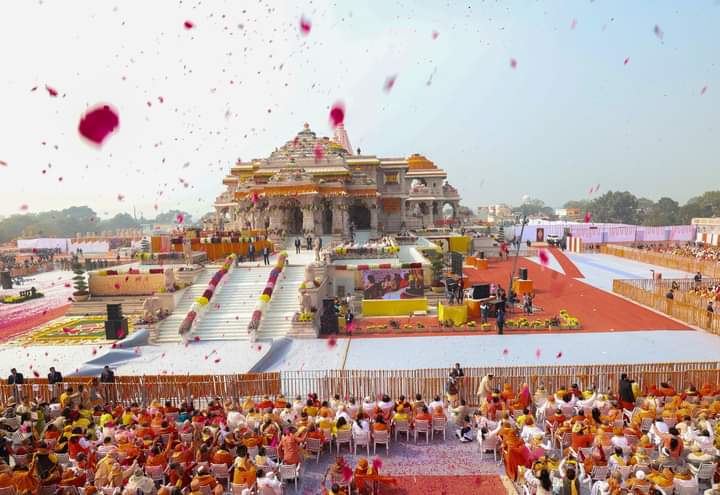NATIONAL: The Pran Pratishtha (consecration) ceremony of Ram Lalla and the idol of Ram Lalla was unveiled on Monday at the newly built Shri Ram Janmaboomi Temple in Ayodhya in the presence of Prime Minister Narendra Modi.
Indian Air Force (IAF) choppers showered flower petals over Shri Ram Janmaboomi Temple premises in Ayodhya as the idol of Ram Lalla was unveiled.
Devotees and guests chanted ‘Jai Sri Ram’ as the ceremony was held. Over 8,000 guests were invited to the ceremony at the grand temple.
Addressing the gathering, the Prime Minister exclaimed that our Ram had finally arrived after centuries. “After centuries of patience, uncountable sacrifices, renunciation, and penance, our Lord Ram is here,” PM Modi remarked and congratulated the citizens on the occasion.
The Prime Minister said that experiencing the divine consciousness inside the ‘Garbh Grih’ (inner sanctum) could not be put into words, and his body is pulsating with energy, and the mind is devoted to the moment of Pran Pratishtha. “Our Ram Lalla will not reside in the tent anymore.”
On the other hand, Prime Minister Modi interacted with the Shramjeevi, who contributed to the construction of the Shri Ram Janmbhoomi Mandir.
The historic Pran Pratishtha ceremony witnessed the participation of representatives of all major spiritual and religious sects of the country and people from all walks of life, including representatives of various tribal communities.
The magnificent Shri Ram Janmbhoomi Mandir is being constructed in traditional Nagara style. Its length (east-west) is 380 feet, width is 250 feet, and height is 161 feet, and is supported by a total of 392 pillars and 44 doors. The pillars and walls of the temple showcase intricately sculpted depictions of Hindu deities, gods, and goddesses. In the main sanctum sanctorum on the ground floor, the childhood form of Bhagwan Shri Ram (the idol of Shri Ramlalla) has been placed.
The main entrance to the Mandir is situated on the eastern side, which can be approached by ascending 32 stairs through the Singh Dwar. There are a total of five Mandaps (Halls) in the Mandir – Nritya Mandap, Rang Mandap, Sabha Mandap, Prathana Mandap, and Kirtan Mandap. Near the Mandir is a historic Well (Sita koop) dating back to the ancient era. In the southwestern part of the Mandir complex, at Kuber Tila, the ancient Mandir of Bhagwan Shiv has been restored, along with the installation of a statue of Jatayu.
The foundation of the Mandir has been constructed with a 14-meter-thick layer of roller-compacted concrete (RCC), giving it the appearance of artificial rock. No iron is used anywhere in the Mandir. For protection against ground moisture, a 21-foot-high plinth has been constructed using granite.
The Mandir complex has a sewage treatment plant, water treatment plant, water supply for fire safety, and an independent power station. The Mandir has been constructed employing the country’s traditional and indigenous technology.





